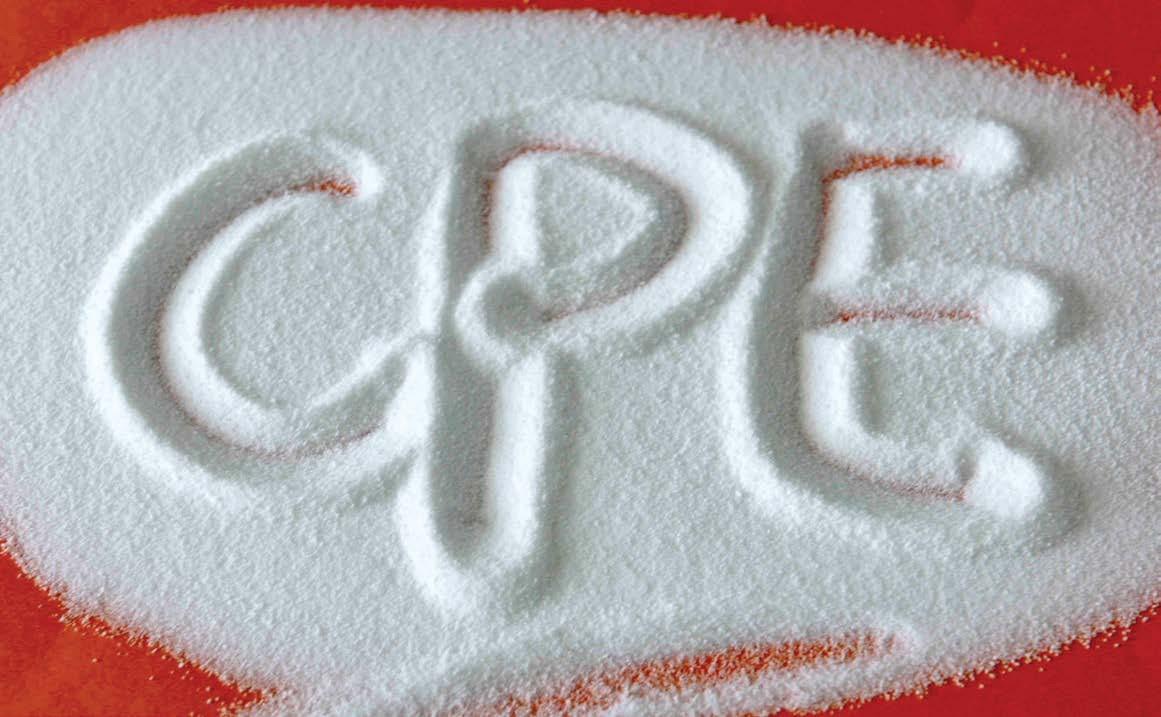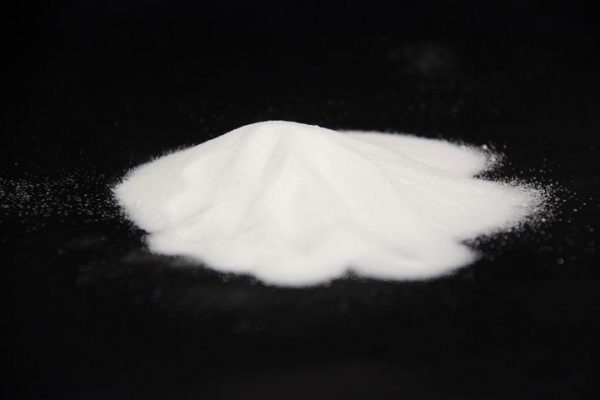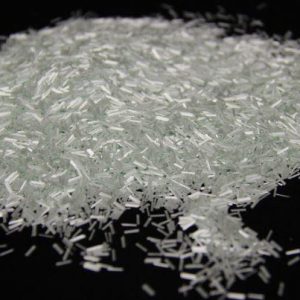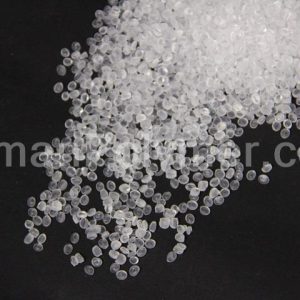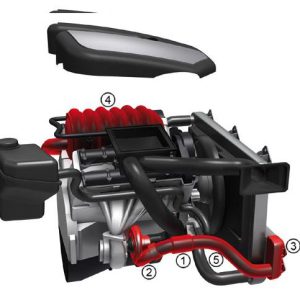Description
Chlorinated polyethylene (CPE) is a type of polyethylene that contains 34 to 44% chlorine in its main chain. Used in PVC polyvinyl chloride mixtures; Because soft and rubbery polyethylene chloride is dispersed in the PVC matrix, thereby increasing the impact resistance. In addition, it increases resistance to weather conditions.
Chlorinated polyethylene is crosslinked by peroxide. When chlorinated polyethylene is added to other polymers, it reduces their flammability. Chlorinated polyethylene is sometimes used as an outer jacket in power cables.
Chlorinated polyethylene (CPE) is a material obtained by replacing hydrogen atoms with chlorine atoms in high-density polyethylene (HDPE). CPE is available as a white powder. It is non-toxic and tasteless. CPE is usually produced in the density range of 0.93-0.96 g / cm3 with an average molecular weight of 5-25 million and a melt index of 0.01-2.0 g in 10 minutes. The degree of chlorination has a significant effect on the properties of CPE. For example, CPE is plastic when its chlorine content is less than 15%, it is a thermoplastic-elastomer when its chlorine content is 16% -24%, and it is a rubber-like elastomer with a chlorine content of 25-48%. The crystallinity of polyethylene is removed from pressurized polyethylene by an increase of approximately 27% chlorine. CPE rubber elastomers preferably contain 30% -40% chlorine. CPE rubber contains 25% -45% chlorine. Increasing the amount of chlorine increases the oil resistance, air permeability and flame resistance of the CPE product. In contrast, reducing the amount of chlorine increases the cold resistance, flexural strength of CPE.
Properties of Chlorinated Polyethylene (CPE)
Chlorinated polyethylene resins and their elastomers (CPE) have excellent physical and mechanical properties. These properties include the following:
Resistance to various chemicals, oils, heat and environmental conditions
Low temperature performance
High compressive strength
Flame lag
High filler acceptance rate
Tensile strength; And abrasion resistance
In addition to the above, CPE resins can vary from crystalline or rigid resins to a flexible elastomeric product. This feature makes them very diverse products. These polymers are used as a main or minor component in a wide range of applications in industry. The biggest application of CPE is impact modifier. Other important end-use applications for CPE include:
Membranes, wire and cable jacks, automotive hoses and tubes, coatings, injection moldable parts, extruded profiles and its use as a base polymer The use of CPE as a shock corrector, primarily in PVC, is close to 74%. It is dedicated to global consumption in 2017.
Applications of chlorinated polyethylene
Chlorinated polyethylene (CPE) has the ability to improve the properties of polyvinyl chloride, polyethylene, polypropylene, polystyrene, ABS and even polyurethane. This material is used as a shock modifier. CPE can also be used as a high performance rubber or elastomer. Modified CPE with other rubber materials is mainly used in the following cases:
Production of wires and cables
Production of hydraulic hoses, cars
Impact resistant plastic strips and sheets
Home appliances such as refrigerator sealing tapes
Magnetic cards
This material is also used in plastic products as an additive in rigid and semi-soft plywood profiles, pipes and fittings, ABS, etc. Also in tires, mainly in wires and cables, industrial and automobile hoses. The filler used in the production of chlorinated polyethylene or CPE compounds is mainly calcium carbonate, clay or talc.
